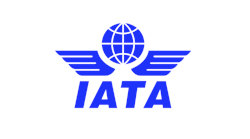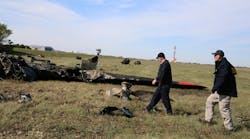On Sept. 21, ARSA released a New Article Inspection Form for use by members when parts are not accompanied by the proper documentation as required by the U.S.-EU Maintenance Annex Guidance (MAG CHG 6). On the same day, the association received EASA's response to a request to clarify the meaning of the term "inventory" under the MAG.
The association worked hard to ensure its members have a method for complying with the documentation requirements. Beginning Oct. 1, 2016, EASA demands that all new parts be accompanied by an EASA or TCCA Form One or FAA Form 8130-3 from a production approval holder (PAH).
The MAG defines a PAH as EU Production Organization Approval (POA) holders, FAA Production Approval Holders (PAH) and Transport Canada Civil Aviation (TCCA) Manufacturer Certificate Holders (MCH). FAA PAHs are production certificate (PC) holders, technical standard order authorization (TSOA) holders and parts manufacturer approval (PMA) holders. For FAA PMA critical parts, the PAHs must be licensees of the type or supplemental type certificate holders, or their articles must have been issued an EASA design approval.
The term "inventory" is used in the Note relating to grandfathered parts. It allows a repair station to install new parts not accompanied by FAA Form 8130-3 if it possesses the requisite PAH (or direct ship supplier) documentation and the part is in inventory on or before Sept. 30, 2016. ARSA requested EASA to apply a broad definition of "inventory" to mean any part in the distribution pipeline as of Sept. 30, whether it was located at a repair station, air carrier or distributor.
The EASA letter, signed by Ricardo Génova Galván (head of EASA's Flight Standards Directorate), confirms the agency means the inventory of the repair station that will use the part in a repair subject to the MAG. The letter also mentions a related effort to facilitate the appointment of distributor designees to issue the FAA Form 8130-3. It also cites EASA's pending effort to reduce the administrative burdens by limiting the need for an EASA or TCCA Form 1 or FAA Form 8130-3 to a much smaller subset of parts, including critical parts.
The letter also notes the previously-reported FAA Notice 8900.380, which confirmed a repair station's privilege to inspect any new part received without the MAG-required documentation. The privilege applies regardless of whether the new part was received before, on or after Oct. 1, 2016. Although the Notice expires in a year, the agencies have committed to including acknowledgement of this avenue in MAG CHG 7.
To implement the privilege, ARSA has developed a form for its repair station members to record an inspection of a new article received without the documentation required by MAG CHG 6. The form can be incorporated into the repair station, quality and forms manuals with appropriate cross-references between those documents and the EASA supplement.
To address the new parts documentation requirements, review your RSQM and EASA supplement against MAG CHG 6 requirements to ensure continued compliance on and after Oct. 1, 2016.
ARSA members that have adopted the association's model repair station and quality (RSQM) manuals and EASA supplement should click here to download the Model EASA Supplement Revision Summary.
ARSA's New Article Inspection Form has been submitted to the FAA for its review and comment. To order your copy of the form - available only to ARSA members - visit arsa.org/publications. Once ordered any updates to the form will be forwarded to original recipients.
To review ARSA's request for clarification of the term "inventory" as well as EASA's response, click here.
For all the information on how ARSA helped ensure the latest version of the MAG is tenable visit: arsa.org/MAG.




